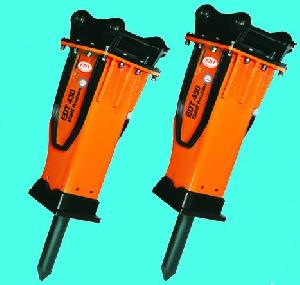The Art and Science of Tool Production: Crafting Precision and Toughness

In every industry, the significance of high-quality tools can not be overemphasized. From building and automobile to woodworking and engineering, tools are the backbone of efficient and exact work. However have you ever questioned the complex process behind tool production? In this post, we will explore the art and science of tool production, checking out the meticulous craftsmanship and advanced innovations that enter into producing tools renowned for their precision, toughness, and dependability.
Style and Engineering:
The journey of tool production begins with style and engineering. Knowledgeable designers and engineers work together to create blueprints and 3D models that capture the preferred requirements and functionalities of the tool. They think about factors such as ergonomics, material choice, and performance requirements to ensure ideal functionality and user experience.
Material Choice:
Selecting the right materials is vital in tool production. Tools are normally made from high-quality alloys and steels that use a balance of strength, resilience, and resistance to use and deterioration. Each tool type needs specific material properties to withstand the forces and stresses encountered throughout usage. For example, drill bits require tough and heat-resistant materials, while wrenches require high tensile strength.
Accuracy Machining:
Precision machining is a fundamental process in tool production. Advanced machining strategies, such as computer system numerical control (CNC) machining, are employed to form and form the tool components with remarkable precision and consistency. CNC machines utilize computer-controlled movements to exactly cut, drill, and mill the raw products, changing them into intricate tool parts.
Heat Treatment:

Heat treatment is a crucial step that enhances the strength and firmness of tool parts. Through procedures like tempering, satiating, and annealing, the materials go through regulated heating and cooling cycles. This modifies the microstructure of the materials, leading to improved toughness, hardness, and resistance to contortion or damage. Heat treatment guarantees that the tools can withstand demanding applications without compromising their performance.
Coating and Finishing:
To further boost the resilience and performance of tools, numerous coverings and finishes are applied. For instance:
a. Difficult finishes: Tools like drill bits and milling cutters typically get difficult finishes, such as titanium nitride (TiN) or titanium aluminum nitride (TiAlN). These finishings offer increased wear resistance, minimized friction, and extended tool life.
b. Anti-corrosion finishes: Tools utilized in moist or corrosive environments, such as wrenches or pliers, are often treated with anti-corrosion finishings. These finishes prevent rust development and guarantee lasting performance.
c. Polishing and grinding: Tool surface areas are thoroughly polished and ground to get rid of any flaws or rough edges, ensuring smooth operation and decreasing the danger of damage to workpieces.
Quality Control:
Rigid quality assurance procedures are carried out throughout the production process to ensure that the tools meet the greatest standards. Tools go through thorough assessments, including dimensional checks, solidity screening, and practical evaluations. Advanced technologies, such as coordinate determining makers (CMMs) and non-destructive screening approaches, are utilized to guarantee the tools' precision, dependability, and adherence to specs.
Continuous Innovation:
Tool makers are constantly pursuing innovation, looking for ways to enhance tool efficiency, sturdiness, and user experience. They invest in research and development to incorporate new materials, style improvements, and manufacturing techniques. Continuous enhancement makes sure that tools progress to meet the ever-changing demands of industries and users.
Conclusion:
Tool production is a careful blend of workmanship and advanced innovation. From the initial design and engineering phases to the precision machining, heat treatment, finish, and quality control processes, every step is taken with precision and care. The outcome is a large variety of high-quality tools that empower professionals and enthusiasts to attain exceptional resultsin their respective fields. The art and science of tool manufacturing ensure that these important instruments embody accuracy, toughness, and dependability. You will find expert advice on drill steel at https://www.vingle.net/posts/6111884
As you grab your dependable tools during your next task, take a minute to appreciate the workmanship and knowledge that entered into their production. The precise design, material selection, precision machining, heat treatment, coating, and quality control processes all add to the tools' performance and longevity. By combining standard workmanship with cutting-edge innovations, tool manufacturers continue to press the boundaries of innovation, offering tools that meet the ever-growing needs of industries and users. So, the next time you hold a well-crafted tool in your hand, remember the complex journey it carried out-- from concept to production. It is a testimony to the devotion and enthusiasm of the tool production market, enabling you to tackle your jobs with self-confidence and attain extraordinary results.
Sources:
https://en.wikipedia.org/wiki/Pile_driver#Hydraulic_hammer
